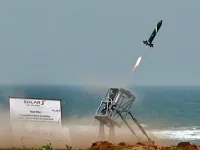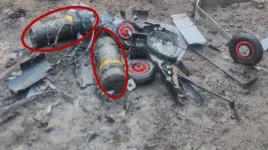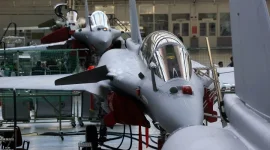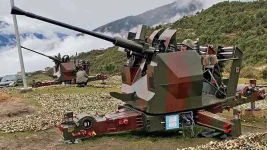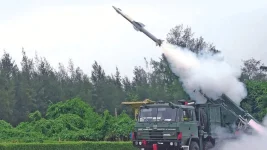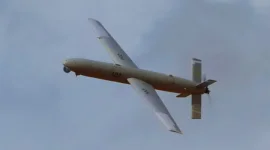Official sources revealed on May 13, 2025, that retaliatory airstrikes by the Indian Air Force (IAF) on May 10 have resulted in the destruction of nearly one-fifth of Pakistan's air force infrastructure. The extensive operation, codenamed 'Operation Sindoor', targeted over a dozen Pakistan Air Force (PAF) bases and led to the loss of several Pakistani fighter aircraft.
The precision strikes were conducted as a direct response to the terrorist attack in Pahalgam on April 22, which claimed the lives of 26 civilians. Indian military officials report that critical PAF installations were hit, including airbases at Nur Khan (Chaklala), Rafiqui (Shorkot), Murid (Chakwal), Sukkur (Bholari), Sialkot, Pasrur, Chunian, Sargodha, Skardu, and Jacobabad. Radar facilities and command centres were also among the targets.
According to these sources, the operation has significantly diminished Pakistan's capacity to launch offensive air operations. Satellite imagery, notably from the Shahbaz Air Base in Jacobabad, is said to confirm the extent of the damage, underscoring India's technological and strategic capabilities in the ongoing conflict.
'Operation Sindoor' was initially launched on May 7, 2025, focusing on nine facilities allegedly linked to terrorist groups Jaish-e-Mohammed (JeM) and Lashkar-e-Taiba (LeT) located in Pakistan and Pakistan-occupied Kashmir (PoK), including sites in Bahawalpur, Muridke, Muzaffarabad, and Kotli. This initial phase was a reaction to what India described as escalating cross-border hostilities, such as drone and missile attacks on Indian civilian and military areas.
The IAF reportedly escalated its campaign after Pakistan conducted retaliatory strikes between May 7 and May 9, targeting 26 locations across India. This led to the large-scale IAF operation against 11 PAF airbases and associated infrastructure during the night of May 9-10.
The Indian Air Force is reported to have used air-launched precision weaponry, including the BrahMos supersonic cruise missile, HAMMER (Highly Agile Modular Munition Extended Range), and SCALP cruise missiles. This operation is believed to be the first combat use of the BrahMos missile, known for its speed of Mach 2.8 and a range of approximately 290 kilometres, allowing for deep strikes into enemy territory.
The selected targets were reportedly chosen for their high operational and strategic value, such as drone command centres, air defence installations, radar systems, and aircraft deployment areas, with officials stating that collateral damage was minimal.
Widespread Damage Reported Across Pakistani Air Bases
Sources indicate that the IAF strikes have severely impacted key PAF bases, substantially weakening Pakistan's air defence network and its ability to conduct offensive air missions. It is estimated that approximately 20% of the PAF's overall infrastructure has been destroyed. This includes damage to runways, hangars, command and control centres, and a number of fighter aircraft, reportedly including JF-17 Thunders, F-16 Fighting Falcons, and potentially a Saab 2000 Erieye Airborne Warning and Control System (AWACS) aircraft. The Erieye AWACS is a critical asset for air surveillance and battle management.The targeted bases span across Pakistan’s Northern, Central, and Southern Air Commands:
- Nur Khan (Chaklala, Rawalpindi): Situated 10 km from Islamabad, this base is home to Pakistan’s Air Mobility Command, C-130 transport aircraft, IL-78 aerial refuellers, and Saab Erieye AWACS. Satellite imagery reportedly shows significant damage to runways and buildings, disrupting logistics and strategic air operations.
- Rafiqui (Shorkot, Punjab): This base hosts JF-17 and Mirage 5 squadrons and is important for rapid deployment capabilities. Its 10,000-foot runway sustained heavy damage. The JF-17 Thunder is a multi-role combat aircraft jointly developed by Pakistan and China.
- Murid (Chakwal, Punjab): Known as a centre for Pakistan’s drone fleet, including Bayraktar TB2s and Wing Loong IIs (both advanced unmanned aerial vehicles), Murid’s hangars and UAV infrastructure were reportedly neutralised.
- Sukkur (Bholari, Sindh): One of Pakistan’s newer airbases, Bholari operates F-16s (US-origin multi-role fighters), JF-17s, and Saab 2000 AWACS. High-resolution satellite images from Maxar Technologies reportedly confirmed a direct hit on a quick-reaction alert hangar, with debris suggesting possible aircraft damage.
- Sialkot and Pasrur (Punjab): These forward operating bases, vital for operations near the Line of Control (LoC), allegedly had their radar sites and air defence units destroyed.
- Chunian (Punjab): An operational base 70 km south of Lahore, Chunian’s radar and communication systems were reportedly disrupted.
- Sargodha (Mushaf, Punjab): Considered Pakistan’s most elite airbase, housing the Central Air Command, Combat Commanders School, and nuclear-capable aircraft, Sargodha suffered runway damage and the loss of important assets.
- Skardu (PoK): A strategic northern base near the Line of Actual Control (LAC), the damage to Skardu is said to have degraded Pakistan’s surveillance and air operational capabilities in the region.
- Jacobabad (Shahbaz, Sindh): Satellite imagery showed extensive damage to a hangar and operational support areas. This base hosts F-16s, JF-17s, and AW139 helicopters and has previously supported international operations.
- Rahim Yar Khan (Punjab): A forward base sharing its runway with Sheikh Zayed International Airport, its runway was reportedly left with a large crater, halting flight operations.
At Shahbaz Air Base in Jacobabad, images reportedly show a hangar on the main apron destroyed, with possible minor damage to the air traffic control building.
Craters on runways at Sargodha, Rahim Yar Khan, and Nur Khan, along with damaged air defence radars at Pasrur, Chunian, and Arifwala, are also cited as evidence of the precision and scale of the Indian attacks.

